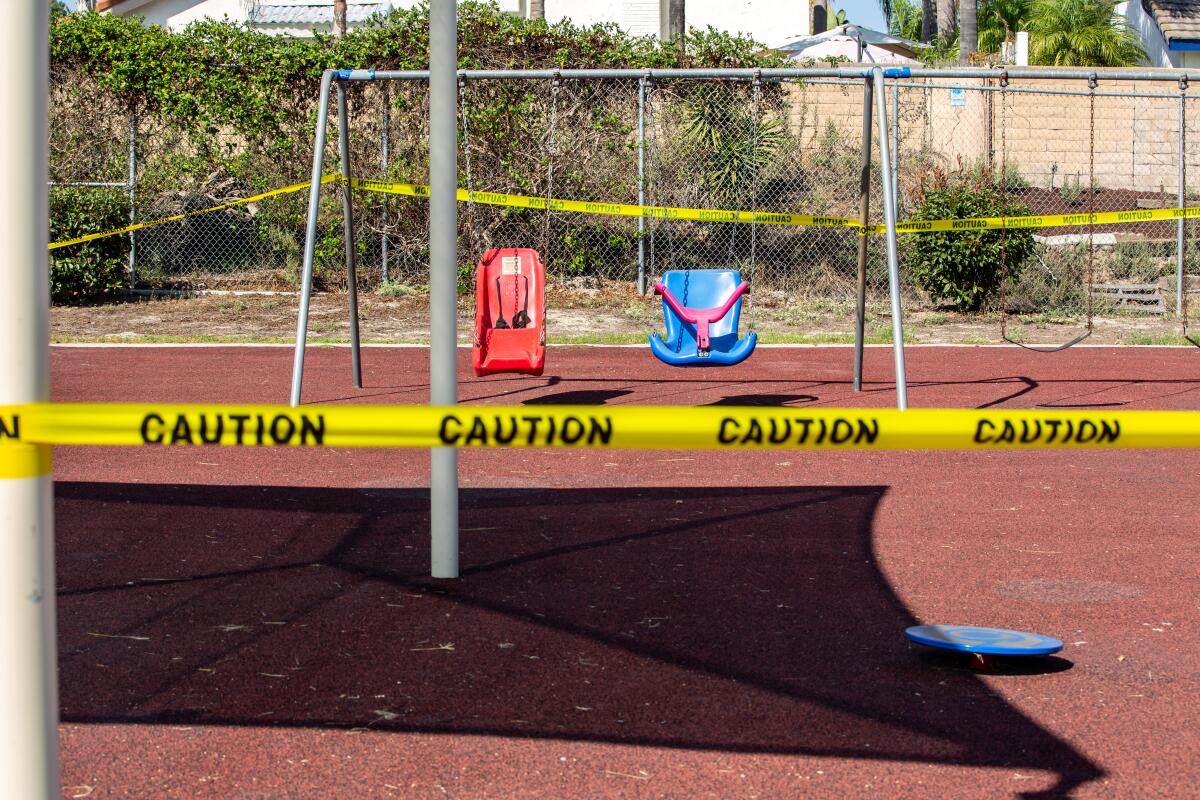Editorial: How to get our sad and anxious kids from traumatized to OK

- Share via
It was easy to see that COVID-19 represented a crisis of huge proportions prompting extraordinary measures to protect public health.
Less easily perceived is how the pandemic rocked the mental health of children who endured more than a year of remote schooling and social isolation, while grappling with fears of this deadly and unprecedented virus. But they are suffering, and many teachers and parents could tell you that without conducting a study. Some California school districts have reported that absenteeism has surged. Visits to emergency rooms for suicide attempts or suicidal thoughts are way up. Schools are reporting a rise in student behavioral problems, such as getting into fights, not handing in assignments and seeming withdrawn or on edge.
Mental health isn’t something to be easily dismissed. It’s very real and serious. Telling kids to suck it up isn’t going to lessen the depression and anxiety that many of them feel. Ignored, this will be an issue that haunts the nation for decades with higher rates of addiction, fractured family lives and other health and social ills.
Good for U.S. Surgeon General Vivek H. Murthy for calling attention to the psychological turmoil of our youth. Even before the pandemic, Murthy notes in an advisory issued this week, there were clear signs of diminished mental health among young people. From 2009 to 2019, the proportion of high school students reporting persistent feelings of sadness or hopelessness increased by 40%, and reporting suicidal thoughts by nearly as much. In just four years — from 2011 to 2015 — youth psychiatric visits to emergency rooms for depression, anxiety and behavioral issues increased by 28%.
The pandemic worsened things considerably, Murthy said. In the United States, suicide attempts by girls increased by 51% this year, as compared to the same period just two years before. It’s a global problem; a study of young people worldwide, published this year in JAMA Pediatrics, found that symptoms of depression and anxiety have doubled under the pandemic. The problem is especially acute among Black, Latino and low-income students, whose communities were under extra stress during the pandemic. Their parents were more likely to be essential workers who were at higher risk of catching COVID-19 on the job. There was more infection and serious illness and death in their neighborhoods.
It’s not that California or the federal government ignored this. The schools are awash in money to provide more mental health services to students, but the counselors simply aren’t available for hire. Even families who can afford paying for private mental health services are finding that therapists are booked. This is the result of the state failing to build a robust, well-organized mental health infrastructure for kids, who generally need therapies geared to their developmental stage in life.
Murthy provides a long list of remedies for parents, schools, governments, and the media. But though the recommendations are worthy — for example, urging parents to pay attention to and talk with their kids, and having social-media companies institute more safeguards for kids as they do in the United Kingdom and Australia — they’re mostly generic and long term.
Right now, the mental health of the nation’s children is in crisis and calls for immediate action that addresses the psychological trauma children and teenagers feel today.
In California, that could include large-scale community efforts to educate parents and other adults in children’s lives about how to recognize the signs of depression and anxiety and what resources are available to help kids.
Another strategy might include quickly vetting and training a huge cadre of volunteers to buddy up with students and offer an empathetic ear and emotional support. College students, especially grad schools, could be a good source of help, with course credit given for their service. Schools could lead the creation of peer groups in high schools, in which students look out for signs that others need help and provide companionship for those who are hurting.
We have the money for these services, but lack the leadership to get them. Tony Thurmond, state superintendent of public instruction, has the perfect background for this, having worked in the field of social service for disadvantaged youth and life skills training. There’s an opportunity here for him to lead the charge to help a generation of worried, sad kids, and doing it sooner rather than later.
More to Read
A cure for the common opinion
Get thought-provoking perspectives with our weekly newsletter.
You may occasionally receive promotional content from the Los Angeles Times.










